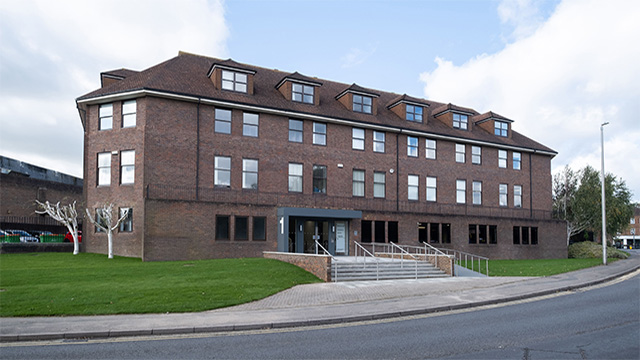On the right path: LREF discusses the power of mapping
LISTEN: We all lose our way sometimes. Particularly when it comes to innovation and trailblazing. When you are forging a new, potentially uncharted path, a little bit of guidance to point you in the right direction can be invaluable.
Good news, then, that talk in real estate is increasingly turning to the power, and value, of location tools. From navigating the inevitable twists and turns along the road to digital transformation to the geospatial technologies elevating the real estate sector to new heights, both in terms of tech solutions and data collection/analysis, everything we do in life is, for all intents and purposes, based on a map.
The power of mapping, geospatial data and location services was the subject of one of our EG podcasts at LREF last week – that and confessions around the table of a nerdy yet universal love of all things cartographical.
LISTEN: We all lose our way sometimes. Particularly when it comes to innovation and trailblazing. When you are forging a new, potentially uncharted path, a little bit of guidance to point you in the right direction can be invaluable.
Good news, then, that talk in real estate is increasingly turning to the power, and value, of location tools. From navigating the inevitable twists and turns along the road to digital transformation to the geospatial technologies elevating the real estate sector to new heights, both in terms of tech solutions and data collection/analysis, everything we do in life is, for all intents and purposes, based on a map.
The power of mapping, geospatial data and location services was the subject of one of our EG podcasts at LREF last week – that and confessions around the table of a nerdy yet universal love of all things cartographical.
First up, our experts made it clear that mapping comes down to more than just location, location, location. “Mapping is the process by which data is compiled and formatted into some sort of visual image,” said Mishcon de Reya partner Susan Freeman on the subject of “what is mapping” – a point quickly picked up by tech expert and former Ordnance Survey land and property sector manager Dan Hughes. “Real estate – almost more than any other industry – is a location business,” he said. “And as the sector becomes more technical, location data becomes more important. Mapping is really just a visual interface for humans to understand that location data. It is an interpretation of location data.”
Making the most of maps
Andy Pyle, head of UK real estate at KPMG, added that the conversation needs to go beyond how mapping data can be defined within real estate to address how it can be harnessed and utilised: “Mapping technology can give us a much better sense of how individuals are moving around,” he said. “At its essence, it is actually giving us more insight into location and what that means for the sorts of buildings and built environment we actually need. It’s incredibly powerful.”
Could some of that power be driven by the fact that, as a widely accepted and ancient practice, following a map is also familiar and intuitive? “Maps have been around for hundreds of years,” added Pyle. “They’re incredibly intuitive at a basic use-case level for everybody to understand. The interesting thing will be to see some of the more sophisticated uses, whether that’s the way 3D visualising of cities is impacting the planning process or how applications like What3Words – which effectively gives an address to every square metre of the planet – can help people define where they live and what their property rights are.”
However, added Mischon’s Freeman, for all the positive power of maps, there is no getting away from the issue of data and, more specifically, privacy. “Mapping tools are great because they are powered using all of this data and information that people provide,” she said. “But a lot of people are unsure about the idea that they are giving away data as they move around, and there is going to be a bit of a pushback concern about data privacy. I don’t think people necessarily know that when they turn their phones on and use things like mapping and traffic apps that they are providing information and data themselves.”
“People are giving away their data,” said Hughes. “But I think that’s great as long as they are aware they are doing so. If you think about it, Google Maps is an incredibly expensive project that people can use free of charge. The reason for this is that we all pay through the data we provide and give back to the platform. That makes sense to me, and I think as long as people understand that’s the model, then that’s fine.”
It’s time to go nationwide
As for whether mapping data and location tools are being properly and effectively harnessed by the real estate sector, Hughes is quick to say no – mainly because the industry doesn’t make the information it has access to work hard enough once it has been collected. “Let’s take an example of a building being sold,” he said. “When we look at addressing data, we will write down what we personally think of as that building. So, it could be that I describe it as ‘the big red shiny building on the corner’. The problem is that when I show that to everyone else around the table, they might not get it because we all have different interpretations, so suddenly my description doesn’t mean anything.
“Real estate captures data, but very much on a human individual basis, as opposed to a systemic national basis,” he added. “Addressing is a very simple example, but we need to start thinking about how we can capture information in a national, standardised way. Very few data sets are not geospatially linked in some shape or form, and we need to be much more standardised in the way we capture information to make sure it can be properly used and analysed.”
And this sort of standardised approach to data collection is exactly what real estate needs to embrace on a wider, city-development scale, added Pyle: “Think about smart cities, where you will have lots and lots of different technologies being able to interact with each other. Mapping technologies will be absolutely critical here, and will need to be standardised to work across entire cities.
“On top of that, the biggest thing for me is not just about capturing data. It’s about what you do with it afterwards. You have to turn it into insight, which is a non-obvious piece of information you get from analysing the data. And then you have to do something with that which informs decisions.
“If you look at some of the smartest apps, that’s what they’re already doing. The CityMapper live feed tells you to reroute because there is a problem with the usual railway line or that there is a traffic jam ahead – which they know because the system is capturing millions of data points. But the key is that they then use that data to help users change, adapt, make a difference. That’s the sort of thing real estate needs to be doing to make data really work hard.”
As to how close real estate is to achieving this, the universal answer across our three experts was that there is likely to be a very long way to go. But, said Freeman, it is not all doom and gloom: “There is huge potential, and there are patterns we can analyse. Retail is probably a good sector to look at and learn from in this regard. Footfall data is something that is being used a lot now in this sector, and it’s essential because otherwise what are you basing your evidence on?
“Real estate across the board should be looking at utilising this sort of data much more effectively and efficiently.”
The panel
Andy Pyle, head of UK real estate, KPMG UK
Susan Freeman, partner, Mishcon de Reya
Dan Hughes, founder, Alpha Property Insight
In partnership with
Knowledge partner
To send feedback, e-mail emily.wright@egi.co.uk or tweet @EmilyW_9 or @estatesgazette
Photo: Shutterstock











